
Robert Boyle was an Anglo-Irish natural philosopher, chemist, physicist, alchemist and inventor. Boyle is largely regarded today as the first modern chemist, and therefore one of the founders of modern chemistry, and one of the pioneers of modern experimental scientific method. He is best known for Boyle's law, which describes the inversely proportional relationship between the absolute pressure and volume of a gas, if the temperature is kept constant within a closed system. Among his works, The Sceptical Chymist is seen as a cornerstone book in the field of chemistry. He was a devout and pious Anglican and is noted for his writings in theology.
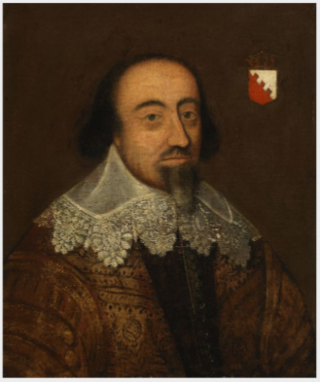
Richard Boyle, 1st Earl of Cork, also known as the Great Earl of Cork, was an English politician who served as Lord Treasurer of the Kingdom of Ireland.

Earl of Cork is a title in the Peerage of Ireland, held in conjunction with the Earldom of Orrery since 1753. It was created in 1620 for Richard Boyle, 1st Baron Boyle. He had already been created Lord Boyle, Baron of Youghal, in the County of Cork, in 1616, and was made Viscount of Dungarvan, in the County of Waterford, at the same time he was given the earldom. These titles are also in the Peerage of Ireland.

Richard Boyle, 1st Earl of Burlington, 2nd Earl of Cork was an Anglo-Irish nobleman who served as Lord High Treasurer of Ireland and was a Cavalier.
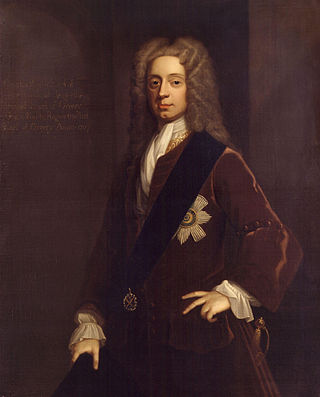
Earl of Orrery is a title in the Peerage of Ireland that has been united with the earldom of Cork since 1753. It was created in 1660 for the soldier, statesman and dramatist Roger Boyle, 1st Baron Boyle, third but eldest surviving son of Richard Boyle, 1st Earl of Cork. He had already been created Lord Boyle, Baron of Broghill, in the Peerage of Ireland in 1628. He was succeeded by his son, the second Earl. He represented County Cork in the Irish House of Commons and served as Vice-President of Munster. On his death, the titles passed to his eldest son, the third Earl. He represented East Grinstead in the English House of Commons. He was succeeded by his younger brother, the fourth Earl. He was a Lieutenant-General in the Army and a prominent diplomat. In 1711 he was created Baron Boyle of Marston, in the County of Somerset, in the Peerage of Great Britain. His son, the fifth Earl, succeeded his third cousin as fifth Earl of Cork in 1753. See the latter title for further history of the peerages.

Earl of Shannon is a title in the Peerage of Ireland. It was created in 1756 for the prominent Irish politician Henry Boyle, who served as Speaker of the Irish House of Commons and as Chancellor of the Irish Exchequer. The earldom is named after Shannon Park in County Cork.

Earl of Burlington is a title that has been created twice, the first time in the Peerage of England in 1664 and the second in the Peerage of the United Kingdom in 1831. Since 1858, Earl of Burlington has been a courtesy title used by the dukes of Devonshire, traditionally borne by the duke's grandson, who is the eldest son of the duke's eldest son, the marquess of Hartington.

Charles Boyle, 4th Earl of Orrery KT PC FRS was an English nobleman, statesman and patron of the sciences.
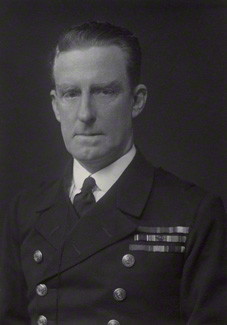
Admiral of the Fleet William Henry Dudley Boyle, 12th Earl of Cork and 12th Earl of Orrery, was a British Royal Navy officer and peer. He served as a junior officer on the China Station during the Boxer Rebellion and went on to serve in the First World War initially as a staff officer during the Dardanelles Campaign and as then commander of the Red Sea Patrol: in that capacity, he led a six-day bombardment of the Turkish held port of Jeddah and worked closely with T. E. Lawrence in support of the Arab Revolt. In the inter-war years he was Commander-in-Chief, Reserve Fleet, President of the Royal Naval College, Greenwich and Commander-in-Chief of the Home Fleet. After succeeding a cousin and becoming Earl of Cork in 1934, he became Commander-in-Chief, Portsmouth.

Richard Edmund St Lawrence Boyle, 9th Earl of Cork and 9th Earl of Orrery KP, PC, styled Viscount Dungarvan between 1834 and 1856, was a British courtier and Liberal politician. In a ministerial career spanning between 1866 and 1895, he served three times as Master of the Buckhounds and twice as Master of the Horse.
County Cork was a parliamentary constituency in Ireland, represented in the Parliament of the United Kingdom. From 1801 to 1885 it returned two Members of Parliament (MPs) to the House of Commons of the United Kingdom of Great Britain and Ireland.
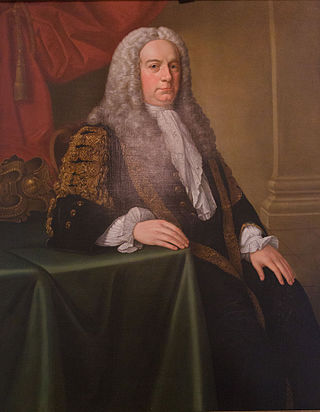
Henry Boyle, 1st Earl of Shannon, PC, was an Anglo-Irish politician and peer who served as the speaker of the Irish House of Commons from 1733 to 1756. A prominent parliamentarian who sat for almost fifty years in the Parliament of Ireland, Boyle frequently defended Irish interests against British officials, eventually leading to a legal crisis which saw him step down as speaker in return for a peerage.
Charles Boyle, Viscount Dungarvan, 3rd Baron Clifford, FRS, was an English peer and politician. He was a member of a famous Anglo-Irish aristocratic family.

Henry Boyle, 3rd Earl of Shannon KP, PC (Ire), styled Viscount Boyle from 1764 until 1807, was among the last surviving Members of the Parliament of Ireland. He represented County Cork in the new Parliament of the United Kingdom from 1801 to 1807. He then briefly served as Member of Parliament for Bandon in 1807, succeeding as Earl of Shannon later in the same year. He served as Custos rotulorum for County Cork from 1807 to his death. He was the first Lord Lieutenant of Cork from 1831 to his death.

Ralph Bathurst, FRS was an English theologian and physician.
Michael Boyle, was Bishop of Waterford and Lismore.
Captain The Hon. Robert Boyle-Walsingham was an Irish Royal Navy officer and member of parliament. He was killed in the Great Hurricane of 1780 while serving as a commodore in HMS Thunderer.
Patrick James Boyle, 8th Earl of Glasgow,, was a Scottish nobleman and a far right political activist, involved with fascist parties and groups.
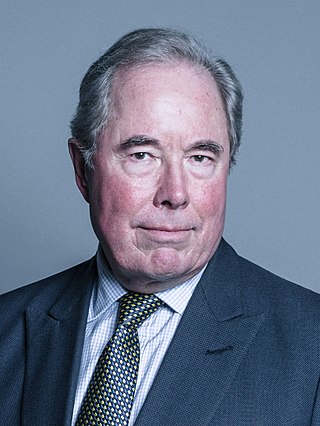
John Richard Boyle, 15th Earl of Cork and 15th Earl of Orrery is a British hereditary peer and a member of the House of Lords, where he sits as a Crossbencher. Boyle was an officer in the Royal Navy and then had a career in the sugar industry before inheriting his titles in 2003.










